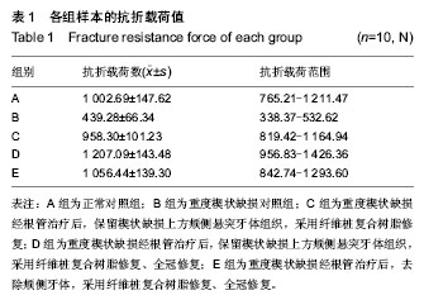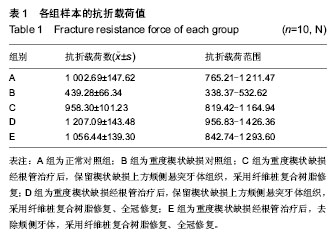| [1] Levitch LC,Bader JD,Shugars DA,et al. Non-carious cervical lesions.J Dent 1994;22(4):195-207.
[2] Barttlet DW,Shah P.A critical review of non-carious cervical 2. (wear) lesions and the role of abfraction, erosion, and abrasion. J Dent Res.2006;85(4):306-312.
[3] 刘彦,牛忠英,石馨,等. 2038 例中老年人健康体检中牙齿楔形缺损的调查和分析[J].牙体牙髓牙周病学杂志, 2010,20(11): 645-647.
[4] Rees JS.The biomechanics of abfraction.Proc Inst Mech Eng H.2006;220(1):69-80.
[5] Shetty SM,Shetty RG,Mattigatti S.No carious cervical lesion: abfraction. J Int Oral Health.2013;5(5):143-146.
[6] Walter C,Kress E,Götz H,et al.The anatomy of non-carious cervical lesions. Clin Oral Investig.2014;18(1):139-146.
[7] Bader JD,Levitch LC,Shugars DA,et al.How dentists classified and treated non-carious cervical lesions.J Am Dent Assoc. 1993;124(5):46-54.
[8] 刘洪臣,王燕一,赵彦平.230例老年人牙折修复的临床分析[J].口腔颌面修复学杂志,2000,1(3):154-155.
[9] Manning KE,Yu DC,Yu HC,et al.Factors to consider for predictable post and core build-ups of endodontically treated teeth. Part II: Clinical application of basic concepts.J Can Dent Assoc.1995;61(8):696-701.
[10] Lamichhane A,Xu C,Zhang FQ.Dental fiber-post resin base material: a review. J Adv Prosthodont.2014;6(1):60-65.
[11] Zicari F,Coutinho E,Scotti R,et al.Mechanical properties and micro-morphology of fiber post.Dent Mater. 2013;29(4):e45-52.
[12] Sharafeddin F,Alavi A,Talei Z.Flexural strength of glass and polyethylene fiber combined with three different composites.J Dent (Shiraz).2013;14(1):13-19.
[13] Ottl P,Hahn L,Lauer HCH,et al.Fracture characteristics of carbon fiber,ceramic and non-palladium endodontic post systems at monotonously increasing loads.J Oral Rehabil. 2002;(29):175-183.
[14] Mortazavi V,Fathi M,Katiraei N,et al.Fracture resistance of structurally compromised and normal endodontically treated teeth restored with different post systems: An in vitro study. Dent Res J (Isfahan).2012;9(2):185-191.
[15] Theodosopoulou JN,Chochlidakis KM.A systematic review of dowel (post) and core materials and systems.J Prosthodont. 2009;18(6):464-472.
[16] Frydman G,Levatovsky S,Pilo R.Fiber reinforced composite posts: literature review. Refuat Hapeh Vehashinayim. 2013; 30(3):6-14.
[17] Dikbas I,Tanalp J.An overview of clinical studies on fiber post systems.Scientific World J.2013;2013:171380.
[18] Malferrari S,Monaco C,Scotti R.Clinical evaluation of teeth restored with quarlz fiber-reinforced epoxy resin posts.Int J Prosthodont.2003;16(1):39-44.
[19] 葛永红,郭平川,于鹏,等.玻璃纤维树脂桩核与金属铸造桩核保留残冠、残根临床比较[J].武警医学院学报,2008,17(12): 1088-1090.
[20] 皮昕.口腔解剖生理学性[M].4版.北京:人民卫生出版社,2001:9.
[21] Nie EM,Chen XY,Zhang CY,et al.Influence of masticatory fatigue on the fracture resistance of the pulpless teeth restored with quartz-fiber post-core and crown. Int J Oral Sci.2012;4(4):218-220.
[22] Afolabi AO,Shaba OP,Adegbulugbe IC.Distribution and characteristics of non carious cervical lesions in and adult Nigerian population.Nig Q Hosp Med. 2012;22(1):1-6.
[23] Jiang H,Du MQ, Huang W.The prevalence of and risk factors for non-carious cervical lesions in adults in Hubei Province, China. Community Dent Health. 2011;28(1):22-28.
[24] Borcic J,Anic I,Urek MM,et al.The prevalence of non-carious cervical lesions in permanent dentition.J Oral Rehabil. 2004; 31(2):117-123.
[25] Tomasik M,Lipski M.Frequency and etiology of noncarious cervical lesions with pulp exposure.Ann Acad Med Stetin. 2009;55(1):70-78.
[26] Soares PV,Souza LV,Verissimo C,et al.Effect of root morphology on biomechanical behavior of premolars associated with abfraction lesion and different loading types.J Oral Rehabil.2014;41(2):108-114.
[27] 李苏伶,付钢,王璐.不同载荷角度下后牙残根核桩冠修复后三维有限元应力分析[J].重庆医科大学学报,2009,34(3):342-345.
[28] Poiate IA,Vasconcellos AB,Poiate Junior E,et al.Stress distribution in the cervical region of an upper central incisor in a 3D finite element model.Braz Oral Res.2009;23(2):161-168.
[29] Andreaus U,Colloca M,Iacoviello D.Coupling image processing and stress analysis for damage identification in a human premolar tooth. Comput Methods Programs Biomed. 2011;103(2):61-73.
[30] Lee HE,Lin CL,Wang CH,et al.Stresses at the cervical lesion of maxillary premolar--a finite element investigation.J Dent. 2002;30(7-8):283-290.
[31] Palamara JE,Palamara D,Messer HH,et al.Tooth morphology and characteristics of non-carious cervical lesions.J Dent. 2006;34(3):185-194.
[32] 杨文丽,林雪峰,刘耀鹏,等.釉牙本质界潜行性破坏对牙颈部硬组织应力分布的影响[J].中国组织工程研究,2014,18(7): 1015-1020.
[33] Guimarães JC,Guimarães Soella G,Brandão Durand L,et al. Stress amplifications in dental non-carious cervical lesions. J Biomech.2014;47(2):410-416.
[34] 夏荣明,吴小斌.不同深度楔状缺损的应力分析[J].口腔医学研究, 2005,21(4):443-444.
[35] 康成容,魏素华.有关桩核冠修复的几点争议[J].国际口腔医学杂志,2007,34(4): 299-302.
[36] Makade CS,Meshram GK,Warhadpande M,et al.A comparative evaluation of fracture resistance of endodontically treated teeth restored with different post core systems-an in vitro study.J Adv Prosthodont. 2011;3(2): 90-95.
[37] 翟家彬,夏阳,章非敏.4种纤维桩的弯曲强度和显微结构的研究[J].口腔医学,2010,30(6):332-335.
[38] 高虹,张超,张振庭.对国内外几种玻璃纤维根管桩的力学性能评价[J].北京口腔医学,2012,20(3):129-131.
[39] Pereira JR,Lins do Valle A,Shiratori FK,et al.The effect of post material on the characteristic strength of fatigued endodontically treated teeth. J Prosthet Dent. 2014 May 14. pii: S0022-3913(14)00191-7. doi: 10.1016/j.prosdent.2014.03.014. [Epub ahead of print]
[40] Qing H,Zhu Z,Chao Y,et al.In vitro evaluation of the fracture resistance of anterior endodontically treated teeth restored with glass fiber and zircon Posts.J Prosthet Dent. 2007;97(2): 93-98.
[41] 谭建国,冯敏.两种桩系统修复对根管治疗牙强度的影响[J].现代口腔医学杂志,2005, 19(1):10-12.
[42] Akkayan B,Gülmez T.Resistance to fracture of endodontically treated teeth restored with different post systems.J Prosthet Dent.2002;87(4):431-437. |

